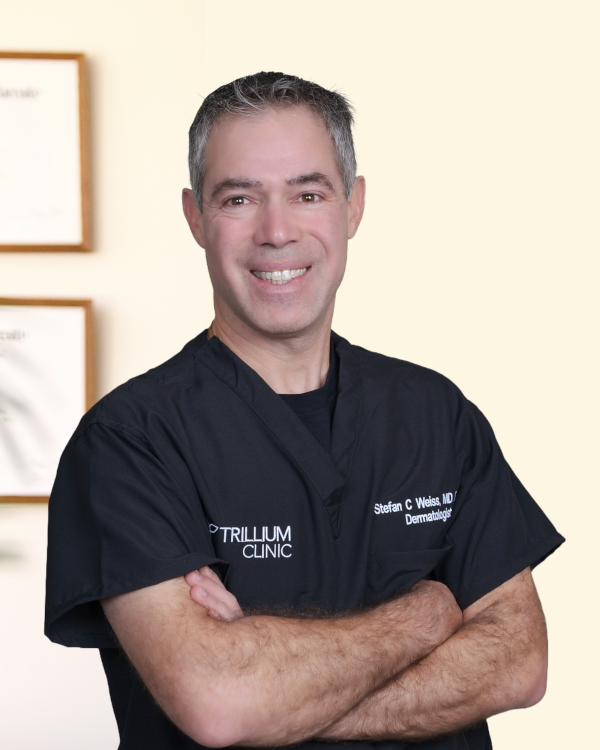Understanding the Pathways to Diagnosis and Treatment
Alopecia, or hair loss, is a condition with various causes and manifestations. It can significantly impact an individual’s self-esteem and quality of life. Effective management begins with understanding its classification into scarring alopecia and non-scarring alopecia. This categorization sets the foundation for diagnosis, hair loss treatment strategies, and prognosis. Below, we delve into the decision tree of alopecia, exploring the complexities of scarring and non-scarring types.
What is Alopecia?
Alopecia refers to the partial or complete loss of hair on the scalp or body. It is not a disease in itself but rather a symptom of underlying conditions. Hair grows in cycles, and disruptions in these cycles can lead to alopecia. While the condition can range from mild to severe, its classification into scarring (cicatricial) and non-scarring alopecia provides a crucial framework for expert clinicians.
Scarring vs Non-Scarring Alopecia: An Overview
The distinction between scarring and non-scarring alopecia is primarily based on the presence or absence of permanent damage to hair follicles.
Scarring Alopecia
Scarring alopecia, also known as cicatricial alopecia, involves irreversible destruction of hair follicles, often replaced by fibrotic tissue. This type of alopecia is typically associated with inflammation and can affect both the scalp and other areas of the body.
Non-Scarring Alopecia
Non-scarring alopecia is characterized by hair loss without permanent follicular damage. It often presents as hair thinning or patches of baldness and can be reversible with appropriate hair loss treatment.
The Decision Tree of Alopecia
A structured approach to diagnosing alopecia involves evaluating its type, underlying causes, and progression. The decision tree begins with differentiating between scarring and non-scarring alopecia, followed by a deeper exploration of clinical features, diagnostic tools, and treatment pathways.
Step 1: Clinical Evaluation
The first step in the decision tree is clinical evaluation, which includes:
- Patient History: Assessing the duration, progression, and associated symptoms such as itching or pain.
- Physical Examination: Observing the scalp for signs of inflammation, scaling, pustules, or scarring.
Step 2: Differentiating Features
Differentiation hinges on recognizing specific features:
- Scarring Alopecia: Presence of follicular plugging, shiny scalp, or atrophy.
- Non-Scarring Alopecia: Preservation of hair follicle openings, diffuse thinning, or patchy baldness.
Step 3: Diagnostic Tools
When clinical evaluation alone is insufficient, diagnostic tools come into play:
- Trichoscopy: A non-invasive dermatoscopic examination to identify follicular patterns.
- Scalp Biopsy: Essential for confirming scarring alopecia and understanding inflammatory patterns.
Scarring Alopecia: Detailed Pathways
Scarring alopecia encompasses various subtypes, each with distinct characteristics:
Lichen Planopilaris (LPP)
LPP is an autoimmune condition causing perifollicular inflammation and scarring. It often presents with itching and scalp tenderness. Diagnosis relies on trichoscopy and biopsy, revealing lichenoid inflammation. Hair loss treatment includes corticosteroids and immunosuppressants.
Central Centrifugal Cicatricial Alopecia (CCCA)
CCCA predominantly affects individuals of African descent. It begins in the vertex area and progresses outward. Hormonal influences and hair care practices are key contributors. Treatment focuses on reducing inflammation with topical steroids and avoiding damaging practices.
Discoid Lupus Erythematosus (DLE)
DLE is a subtype of lupus with localized scarring on the scalp. It manifests as erythematous plaques with scaling and follicular plugging. Diagnosis involves biopsy and autoimmune markers. Treatment includes antimalarials like hydroxychloroquine and photoprotection.
Folliculitis Decalvans
This condition arises from bacterial infections causing pustular inflammation and permanent hair loss. It often requires antibiotics and anti-inflammatory agents for management.
Non-Scarring Alopecia: Detailed Pathways
Non-scarring alopecia includes several subtypes, each requiring distinct management:
Alopecia Areata
Alopecia areata is an autoimmune condition leading to patchy hair loss. It can progress to total scalp or body hair loss. Diagnosis is clinical, characterized by exclamation mark hairs. Treatment includes corticosteroids and biologics targeting immune pathways.
Androgenetic Alopecia (AGA)
AGA is the most common form of non-scarring alopecia, driven by genetic and hormonal factors. It presents as patterned hair loss in men and diffuse thinning in women. Treatment involves topical minoxidil, oral finasteride, and low-level laser therapy.
Telogen Effluvium
Telogen effluvium occurs due to disruptions in the hair growth cycle, often triggered by stress, illness, or medications. Diagnosis relies on history and trichoscopy. Treatment focuses on addressing the underlying cause and promoting hair regrowth.
Decision Tree in Practice
The decision tree for alopecia is a systematic, stepwise process:
- Begin with patient history and physical examination.
- Differentiate between scarring and non-scarring alopecia using clinical features.
- Employ diagnostic tools like trichoscopy and biopsy for confirmation.
- Identify the specific subtype and underlying causes.
- Initiate targeted hair loss treatment based on diagnosis.
Conclusion
Understanding the decision tree of alopecia is crucial for accurate diagnosis and effective management. The dichotomy between scarring alopecia and non-scarring alopecia serves as a critical first step in navigating this complex condition. By employing a structured approach, clinicians can provide individualized care, improving patient outcomes and quality of life. Whether addressing autoimmune, genetic, or environmental factors, the decision tree offers a clear pathway to unraveling the mysteries of alopecia. You can also schedule an appointment with an experienced dermatology clinic to help you out better.








